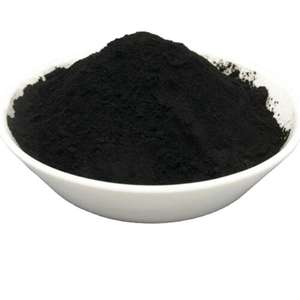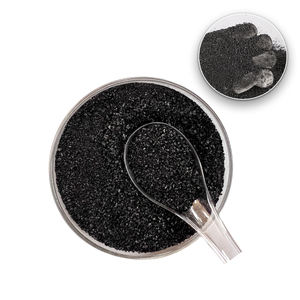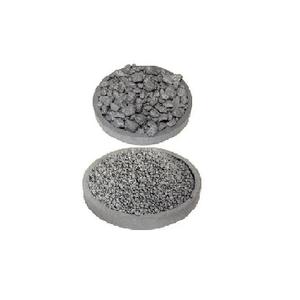Overview of Graphene – Single layers of Graphene
Graphene is a single layer of carbon atoms arranged in a hexagonal lattice, forming a two-dimensional material with remarkable properties. Discovered in 2004, it has since captivated the scientific community and industry alike due to its unique combination of strength, conductivity, and flexibility. Graphene is essentially a single, flat sheet of graphite, the material found in pencil lead, but its properties are vastly different when isolated into a single atomic layer.
Features of Graphene – Single layers of Graphene
-
Unmatched Strength: Graphene is the strongest known material, with a tensile strength of around 130 gigapascals, surpassing steel by a factor of over 100.
-
Extreme Flexibility: Despite its strength, graphene is highly flexible and can be bent, twisted, or rolled without breaking.
-
Exceptional Electrical Conductivity: It conducts electricity exceptionally well, with electrons moving at velocities approaching the speed of light, making it ideal for electronics.
-
Thermal Conductivity: Graphene is also an excellent thermal conductor, dispersing heat efficiently, useful in heat management applications.
-
Transparency: It is nearly transparent, absorbing only 2.3% of light, which, coupled with its conductivity, makes it suitable for transparent electrodes in displays.
-
Chemically Inert: Graphene is highly resistant to corrosion and stable under a wide range of chemical conditions.

(Graphene – Single layers of Graphene)
Parameter of Graphene – Single layers of Graphene
Graphene is a newly discovered material that has the potential to revolutionize the field of materials science. The single-layered structure of graphene is characterized by a unique pattern of interatomic interactions that give it its exceptional strength and conductivity. The fundamental principles of graphene’s properties are still being fully understood, but researchers have made significant progress in developing ways to manipulate these properties using a variety of techniques.
One of the key challenges in understanding graphene’s properties is how they arise from its single layer structure. While the first steps towards understanding graphene’s physical properties were often based on understanding how these properties change under pressure or temperature, more recent research has focused on the behavior of individual atoms within this surface.
There are several different approaches to studying the properties of graphene, including structural spectroscopy, band, and charge transfer simulations. For example, structural spectroscopy can help us understand the interactions between the molecules on the surface of graphene, while band analysis can provide insights into the structure of the material itself. Charge transfer simulations can help us understand how electrons are distributed across the surface of the material and how they interact with one another.
Despite these advances, it remains challenging to fully understand the underlying physics of graphene. Some theories suggest that the particles in graphene may be governed by nonlocal interactions, which could give rise to strange phenomena such as superposition or entanglement. However, much more research is needed to fully understand the underlying mechanisms behind these ideas.
Overall, graphene’s properties continue to intrigue scientists around the world. As we continue to explore the mysteries of this new material, we will undoubtedly make significant strides in improving our understanding of its properties and applications.

(Graphene – Single layers of Graphene)
Applications of Graphene – Single layers of Graphene
-
Electronics: In transistors, touchscreens, and flexible electronics due to its conductivity and flexibility, potentially revolutionizing device design.
-
Energy Storage: As electrodes in batteries and supercapacitors, improving energy storage capacity and charging rates.
-
Sensors: High sensitivity and conductivity make graphene ideal for chemical and biological sensors.
-
Composites: Reinforcing materials like plastics, metals, and concrete to enhance strength and conductivity.
-
Water Filtration: Its atomically thin structure enables efficient filtration of contaminants, including salts, viruses, and bacteria.
-
Medicine: Potential uses include drug delivery systems and bio-sensors due to its biocompatibility and unique properties.
Company Profile
Graphne Aerogels is a trusted global chemical material supplier & manufacturer with over 12-year-experience in providing super high-quality aerogel and graphene products.
The company has a professional technical department and Quality Supervision Department, a well-equipped laboratory, and equipped with advanced testing equipment and after-sales customer service center.
If you are looking for high-quality graphene, aerogel and relative products, please feel free to contact us or click on the needed products to send an inquiry.
Payment Methods
L/C, T/T, Western Union, Paypal, Credit Card etc.
Shipment
It could be shipped by sea, by air, or by reveal ASAP as soon as repayment receipt.
FAQs of Graphene – Single layers of Graphene
Q: Is Graphene – Single layers of Graphene safe for the environment and human health?
A: Research on the environmental and health impacts of graphene is ongoing. While graphene itself is considered relatively inert, concerns exist regarding the potential toxicity of graphene oxide and other derivatives, especially in aquatic ecosystems.
Q: How is Graphene – Single layers of Graphene produced?
A: Graphene can be produced through several methods, including mechanical exfoliation (peeling layers off graphite using adhesive tape), chemical vapor deposition (CVD), and chemical reduction of graphene oxide.
Q: Why is Graphene – Single layers of Graphene not yet widely used in commercial products?
A: Challenges in producing high-quality graphene at a scalable and cost-effective manner have hindered its widespread adoption. Additionally, integrating graphene into existing manufacturing processes requires further technological advancements.
Q: Can Graphene – Single layers of Graphene be used to make stronger and lighter materials?
A: Absolutely, graphene’s addition to composite materials significantly improves their strength and stiffness while reducing weight, making them ideal for aerospace, automotive, and sports equipment.
Q: Does Graphene – Single layers of Graphene have any limitations?
A: While graphene possesses outstanding properties, challenges remain in harnessing its full potential, such as achieving high-quality mass production, managing its tendency to restack in composites, and addressing potential health and environmental concerns.

(Graphene – Single layers of Graphene)






